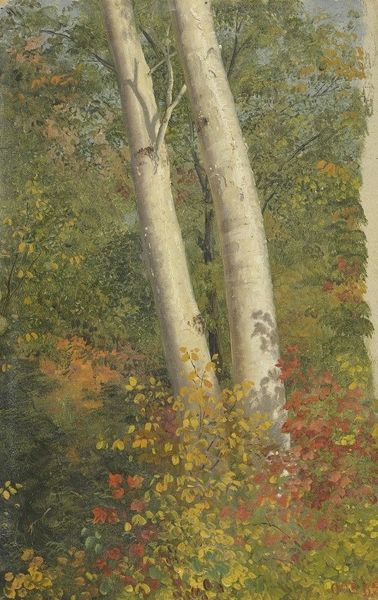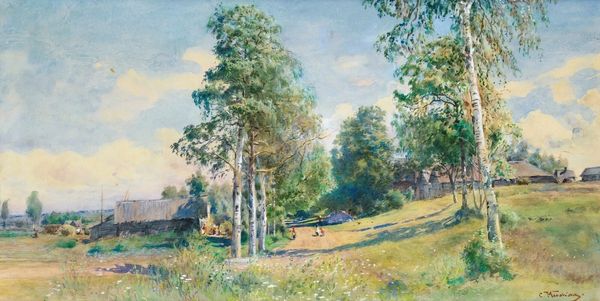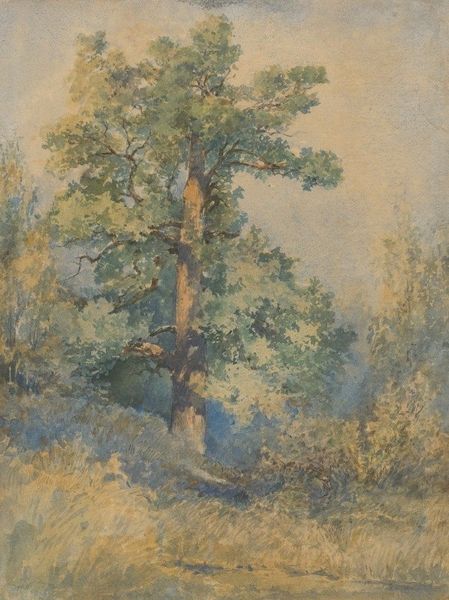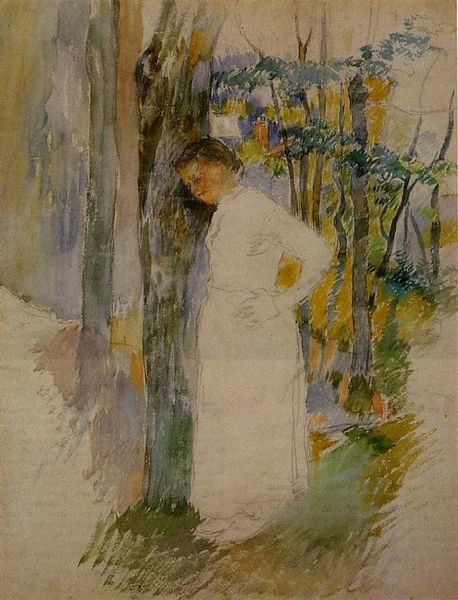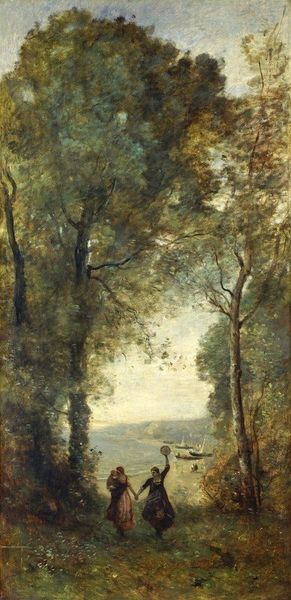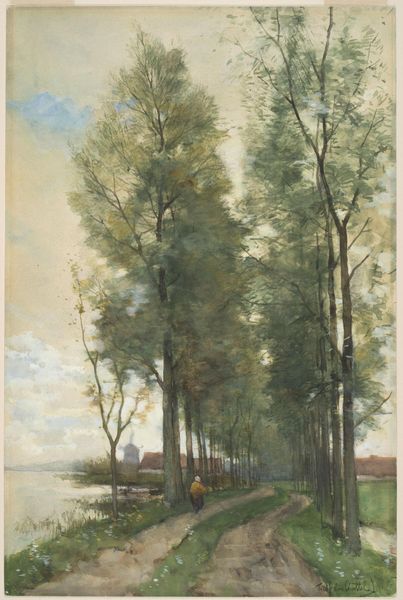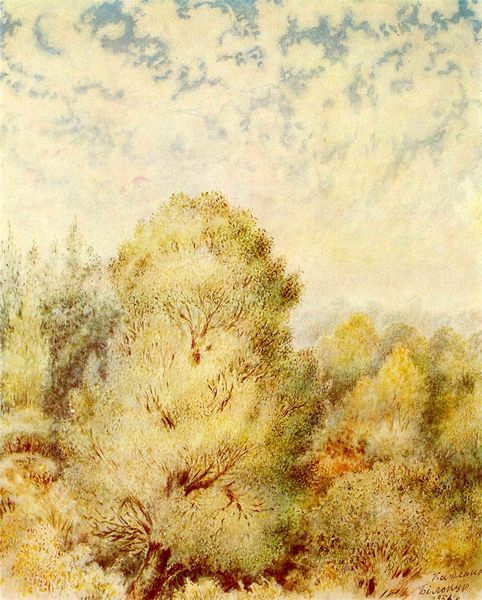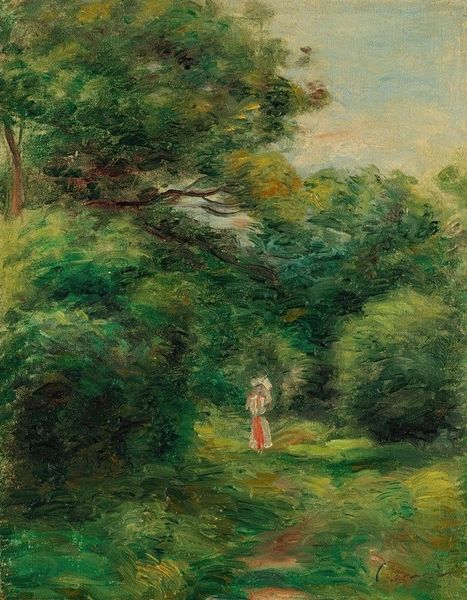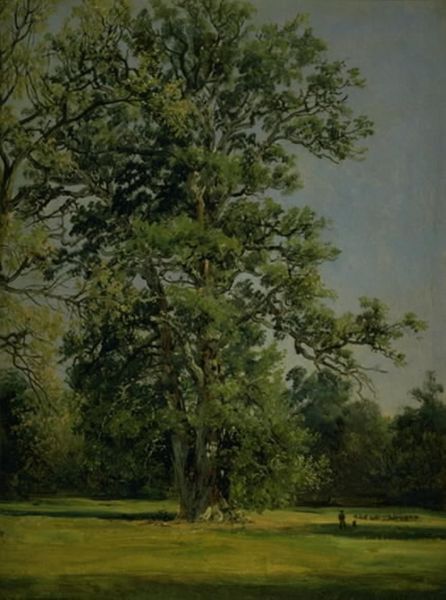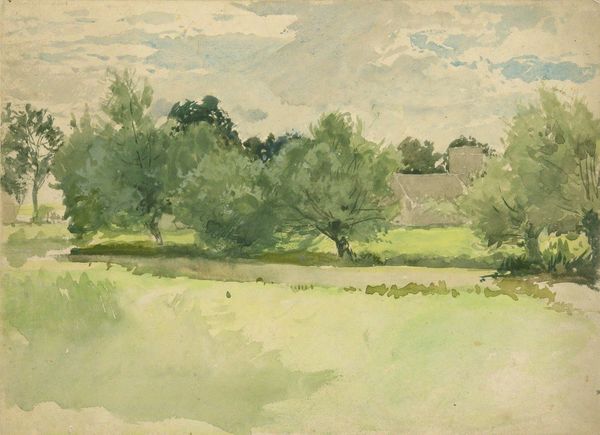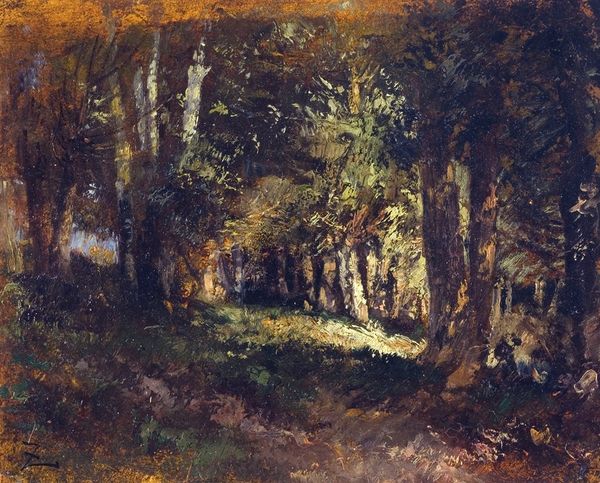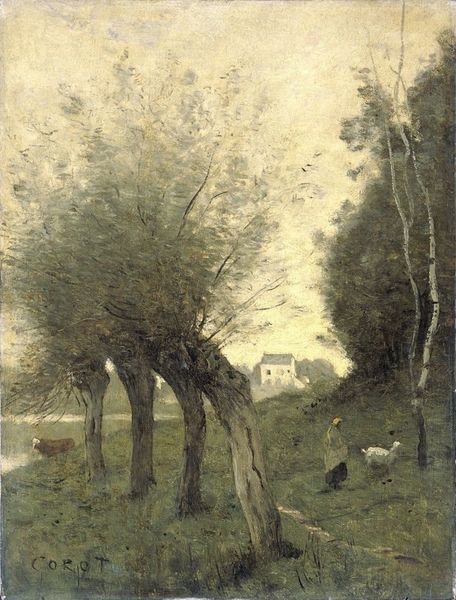
Copyright: Public Domain: Artvee
Editor: This is Carl Larsson’s "Beneath the Birches," created in 1902, and it appears to be watercolor. There's such a delicate, almost dreamlike quality to the scene, with this woman in red nestled amongst the birch trees. What do you see in this piece? Curator: What strikes me is the labor, often invisible, involved in creating this idyllic scene. Watercolor, while seemingly effortless, demands incredible control. The paper itself—its sourcing, processing, and preparation—tells a story of material transformation. Consider the pigments. Where did Larsson source them? How were they manufactured, and what socio-economic systems underpinned their production and distribution? Editor: That's interesting! I was so caught up in the tranquil scene, I didn’t consider the physical work. Curator: Exactly! And consider the scene itself. Is this leisure equally accessible to all? Larsson, as a successful artist, occupies a specific social stratum. Is he representing the democratization of leisure, or simply painting from his own privileged perspective? Even the choice of birches – readily available – versus another material impacts its value. How might the accessibility of these materials affect its reception? Editor: So you're saying that even a seemingly simple landscape can reveal complex layers of social and economic realities? Curator: Precisely. Art isn’t created in a vacuum. It’s a product of its time, its materials, and the labor that went into its making. Question everything! Look beyond the surface to the conditions of its production and consumption. Editor: I’ll definitely look at art differently from now on. This has really broadened my understanding. Thanks! Curator: My pleasure! It's rewarding to see people question assumptions, looking deeper at how materiality impacts a piece's social life.
Comments
No comments
Be the first to comment and join the conversation on the ultimate creative platform.
